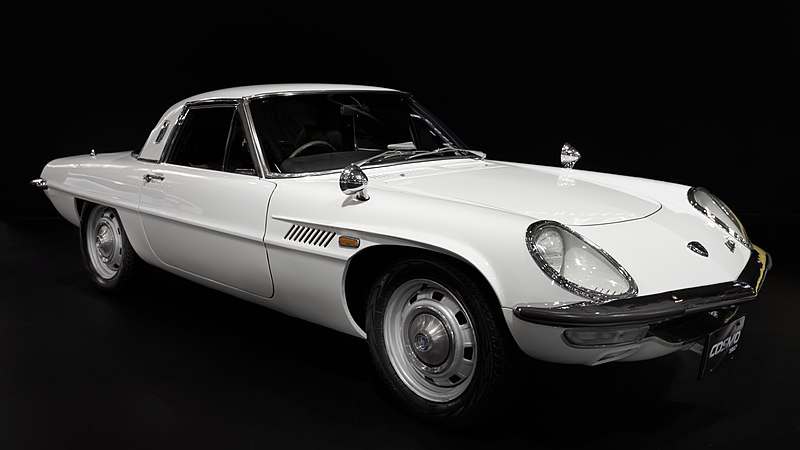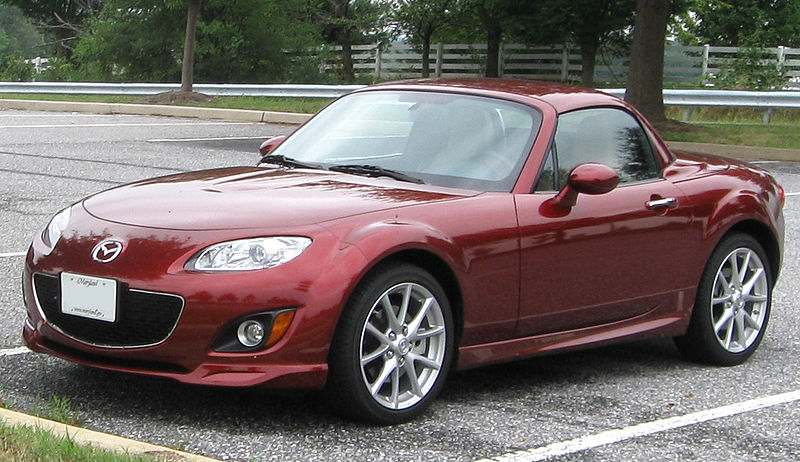In the world of cars, few names resonate with the harmony of innovation, design, and driving pleasure quite like Mazda. From its modest origins in Hiroshima, Japan, to its evolution into a global automotive powerhouse, Mazda’s journey is quite intriguing. This blog post delves into the rich history of Mazda, exploring its milestones, technological advancements, and the indelible impact it has made on the automotive landscape.
The Early Beginnings of Mazda (1920s-1940s)
From Cork to Cars
Mazda’s journey begins in the bustling industrial landscape of early 20th-century Japan. Originally established as Toyo Cork Kogyo Co., Ltd. in Hiroshima in 1920, the company was the brainchild of Jujiro Matsuda. Its initial foray into the business world was not in automobiles but in cork manufacturing.
Transition and Name Origin
In 1927, Toyo Cork Kogyo was shifted into a new direction by Jujiro Matsuda. The company was rebranded as Toyo Kogyo Co., Ltd., dropped the cork business, and focused on metalworks. This pivot marked the beginning of its journey into the automotive industry. Just four years later, in 1931, Toyo Kogyo introduced the Mazda-Go, an auto rickshaw that signaled the company’s ambition and innovative spirit.
The choice of the name ‘Mazda’ for its vehicles was a nod to Ahura Mazda, the god of harmony, intelligence, and wisdom in Zoroastrianism. This name was not just a tribute to a deity but also a reflection of the company’s founder, as ‘Mazda’ was a clever play on Jujiro Matsuda’s surname.
During the creation of the three-wheeled trucks, Matsuda was also contemplating naming it Sumera-Go or Tenshi-Go. “Sumera” means “god,” while “Tenshi” means “angel,” – both reflecting Matsuda’s interest in human faith. Eventually, Mazda was picked, and the rest is history.
Mazda During Wartime
The 1930s and 1940s were tumultuous times around the world, and Mazda was not immune to these challenges. During World War II, the company played a role in Japan’s war effort, producing weapons for the Japanese military. The production of cars was halted.
Post-War Recovery and Growth
The post-war era brought new challenges to Mazda. Hiroshima was attacked with an atomic bomb, and the Toyo Kogyo headquarters sustained heavy damage. Almost 30% of the population of Hiroshima perished, and many of the Toyo Kogyo employees died instantly. The Fuchū plant, located about five kilometers from the explosion’s epicenter, was left relatively unscathed – which became beneficial for the future recovery of the company.
Amidst this catastrophe, Matsuda’s partially intact facilities served a crucial humanitarian role. They were transformed into makeshift hospitals and temporary city halls, playing a pivotal role in supporting survivors. These spaces became centers for healing and administration, contributing significantly to the city’s recovery efforts. Matsuda’s leadership and the use of his facilities provided essential aid and comfort to many in their time of dire need.
Mazda’s resilience in the face of adversity set the stage for its future success. The company’s shift towards vehicle production in the post-war era laid the groundwork for its emergence as a significant player in the global automotive industry.
Mazda’s Mid-20th Century Innovations (1950s-1970s)
As the world recovered and rebuilt in the aftermath of World War II, Mazda embarked on a path that would define its future. During the 1950s to 1970s, Mazda underwent significant innovation and expansion.
Pioneering the Rotary Engine
A pivotal moment in Mazda’s history came with its foray into rotary engine technology. This innovation was to become a cornerstone of Mazda’s identity, differentiating itself from other Japanese auto companies. The Wankel rotary engine, known for its compactness and high power-to-weight ratio, was a game-changer in the automotive industry.
Mazda’s Growing Footprint
By the end of the 1970s, Mazda had firmly established itself as a key player in the automotive world. The company’s commitment to innovation, particularly in rotary engine technology, had set it apart from its peers. Mazda’s vehicles were now known for their unique blend of performance, style, and reliability, catering to a growing base of customers who appreciated the blend of Japanese engineering and design finesse.
Partnership with Ford
During this era, Mazda expanded its presence beyond the Japanese shores. The company formed a partnership with Ford as Mazda was severely impacted by the oil crisis in the 1970s due to its reliance on gas-guzzling rotary engines.
This situation presented Ford with an opportunity to acquire a 24.5% stake in Mazda in 1979, and by 1980, Ford had increased its stake to 33.4%, becoming Mazda’s largest shareholder.
During the 1980s, while Ford’s influence on Mazda wasn’t overly prominent, they collaborated on a few projects. Ford utilized Mazda-built diesel engines in some of its models and rebadged Mazda cars, such as transforming the Mazda 323 into the Mercury Tracer and the Japanese-market Mazda 121 into the Ford Festiva.
The 1990s saw an intensification of this partnership with several joint ventures and shared vehicle platforms. Notable collaborations included the Mazda 121/Ford Festiva and the Mazda 323/Ford Escort, sold under different brand names in various markets. Mazda also utilized Ford platforms, as seen in the Mazda Tribute, which shared its underpinnings with the Ford Escape.
In 1996, Ford increased its stake in Mazda to 33.4%, taking a more active role in its management and decision-making. This period saw Ford initiating a restructuring process within Mazda, leading to cost-saving measures and the development of joint technologies. Mazda benefited from Ford’s financial and technological resources, especially in manufacturing and development.
However, the partnership began to unwind during the 2008 financial crisis when Ford, facing financial difficulties, reduced its controlling shareholding to 13 percent and eventually sold off its remaining shares by 2015. Despite the end of their controlling interest, the partnership between Ford and Mazda resulted in several successful models, including the Ford Laser/Mazda 323, Ford Telstar/Mazda 626, Ford Festiva/Mazda 121, and Ford Escape/Mazda Tribute.
Mazda’s Late 20th Century Evolution (1980s-1990s)
As the world stepped into the final decades of the 20th century, Mazda continued to evolve, embracing new technologies and design philosophies.
Official Name Change and Symbol Change
1984 was a landmark year for the company, as it officially adopted the name Mazda Motor Corporation. This change was more than just symbolic; it represented Mazda’s growing confidence and ambition in the global automotive sector. The name Mazda, inspired by Ahura Mazda, the god of harmony, intelligence, and wisdom, now became the official banner under which the company operated.
During the 1990s, Mazda introduced a new brand symbol. The winged emblem, shaped like the letter M within an oval, was unveiled in 1997.
Breakthroughs and Iconic Models
The late 1980s and 1990s saw Mazda introducing some of its most iconic models, further solidifying its reputation for innovation and design excellence. The Mazda 323 received international acclaim, winning significant awards like the Golden Steering Wheel in Germany.
However, the unveiling of the Mazda MX-5 Miata in 1989 truly captured the world’s attention. This lightweight sports car, with its blend of fun, affordability, and performance, quickly became the world’s bestselling roadster. The MX-5 Miata embodied Mazda’s philosophy of creating cars that brought joy to driving.
Triumph in Motorsports
Mazda’s commitment to excellence was not limited to commercial vehicles. In 1991, the company achieved a historic victory at the 24 Hours of Le Mans with the rotary-powered 787B. Mazda became the first Japanese manufacturer to win this grueling endurance race, showcasing the capabilities of its rotary engine technology on one of the world’s biggest motorsport stages.
Mazda in the 21st Century
Embracing New Technologies and Trends
As the new millennium unfolded, Mazda faced the challenge of adapting to rapidly evolving automotive trends and consumer expectations. The company responded with innovative technologies and forward-thinking design philosophies that have defined its 21st-century trajectory.
The Skyactiv Revolution
A pivotal development in Mazda’s recent history is the introduction of Skyactiv Technology. Unveiled in 2009, Skyactiv encompasses a range of technologies, including highly efficient engines, lightweight construction, and advanced safety features. This technological suite represents Mazda’s commitment to environmental sustainability without compromising on performance and driver enjoyment.
Kodo Design: The Soul of Motion
Alongside technological advancements, Mazda introduced the Kodo—Soul of Motion design philosophy. First revealed through the Shinari concept car, this design approach focuses on creating vehicles that embody dynamism, emotion, and vitality, akin to the energy and grace of living creatures. This philosophy has been instrumental in shaping the aesthetic appeal of Mazda’s 21st-century lineup.
Notable Models and Global Recognition
In this era, Mazda continued to introduce models that garnered international acclaim. The Mazda CX-30, revealed in 2019, is one such example, winning multiple design awards and top safety ratings. The Vision Coupe concept car, presented in 2018, wowed audiences and received numerous global accolades, showcasing Mazda’s prowess in creating visually stunning and innovative vehicles.
Mazda’s Impact in the Automotive World
Mazda’s impact on the automotive industry and car culture is multifaceted, blending technological innovation with a commitment to driving pleasure. This impact can be seen in several key areas:
- Innovation in Engine Technology: Mazda’s most notable contribution to the automotive industry is its development and refinement of the rotary engine, introduced in the 1960s. The rotary engine, known for its compact size, high power output, and smooth operation, set Mazda apart from its competitors. This technology not only powered iconic models like the Cosmo Sport and RX-7 but also demonstrated Mazda’s ability to innovate and think differently.
- Democratization of Sports Cars: With the introduction of the MX-5 Miata in 1989, Mazda played a pivotal role in revitalizing the market for affordable sports cars. The Miata’s philosophy of a simple, lightweight, and fun-to-drive roadster made sports cars accessible to a broader audience. Its impact on car culture is immense, fostering a community of enthusiasts and influencing other manufacturers’ designs of small sports cars.
- Design Philosophy: Mazda’s “Kodo – Soul of Motion” design philosophy, which seeks to create cars that embody the dynamic beauty of life, has been influential in automotive design. Mazda’s focus on aesthetic elegance and emotional appeal in car design has won numerous awards and accolades, influencing how cars are styled and appreciated in the broader automotive community.
- Environmental Initiatives: In recent years, Mazda’s efforts to develop more environmentally friendly technologies, such as Skyactiv technology, have significantly impacted. These technologies, which include advanced engine designs, lightweight materials, and improved aerodynamics, demonstrate Mazda’s commitment to reducing the environmental impact of its vehicles without sacrificing performance.
- Cult Following and Motorsports: Mazda has cultivated a strong following among car enthusiasts, partly due to its involvement in motorsports. The brand’s success in races like the 24 Hours of Le Mans has endeared it to fans of endurance racing. Mazda’s vehicles, particularly the RX-7 and MX-5 Miata, have a cult-like status among car enthusiasts, further influencing car culture.
- Affordability and Reliability: Mazda’s ability to produce vehicles that are not only fun to drive but also reliable and affordable has significantly impacted the automotive market. This approach has allowed Mazda to compete successfully in various segments, from compact cars to SUVs, making it a popular choice among a wide range of consumers.
Mazda’s Most Iconic Car Models
Mazda, renowned for its innovative design and engineering, has produced several iconic and influential models throughout its history. These models not only reflect Mazda’s technological advancements but also its impact on the automotive industry and car culture.
- Mazda Cosmo Sport (1967): The Cosmo Sport holds a special place in Mazda’s history as the first production car to feature a rotary engine. This model showcased Mazda’s unique approach to automotive engineering and paved the way for future rotary-powered vehicles. Its futuristic design and technological innovation made it a standout model of its time.
- Mazda RX-7 (1978-2002): The RX-7 is perhaps one of Mazda’s most iconic models, primarily known for its use of the Wankel rotary engine. Across its three generations, the RX-7 was celebrated for its performance, handling, and distinctive styling. The RX-7 gained a cult following and became a popular choice in motorsports, further cementing its status as a symbol of Mazda’s engineering prowess.
- Mazda MX-5 Miata (1989-present): The MX-5 Miata is a testament to Mazda’s philosophy of creating cars that are fun to drive. Launched in 1989, the Miata rejuvenated the market for lightweight sports cars. Known for its affordability, reliability, and excellent driving dynamics, the MX-5 Miata is the best-selling two-seat convertible sports car in history. Its ongoing production and popularity underscore its enduring appeal and influence.
- Mazda 3 (2003-present): The Mazda 3, known in some markets as the Mazda Axela, is a compact car that combines everyday practicality with an engaging driving experience. It has been well-received globally for its style, performance, and value blend. The Mazda 3 has played a significant role in establishing Mazda as a maker of cars that are both fun to drive and accessible to a wide range of customers.
- Mazda 6 (2002-present): As Mazda’s entry into the mid-size sedan market, the Mazda 6, also known as the Mazda Atenza in some regions, has been praised for its stylish design, driving dynamics, and overall value. It reflects Mazda’s ability to compete in a segment dominated by well-established players, offering a distinct blend of performance and comfort.
Conclusion
Mazda’s story, spanning over a century, is not just about cars; it’s about a philosophy of crafting vehicles that enhance the joy of driving while pushing the boundaries of technology and design. Today, Mazda stands as a testament to the power of perseverance and innovation, continuing to captivate drivers around the world.
As we have journeyed through Mazda’s history, from its early days as a cork manufacturer to its current status as a leader in the automotive industry, one thing remains clear: Mazda’s commitment to excellence, sustainability, and the art of driving is unwavering, ensuring its continued relevance and success in the global automotive arena.




